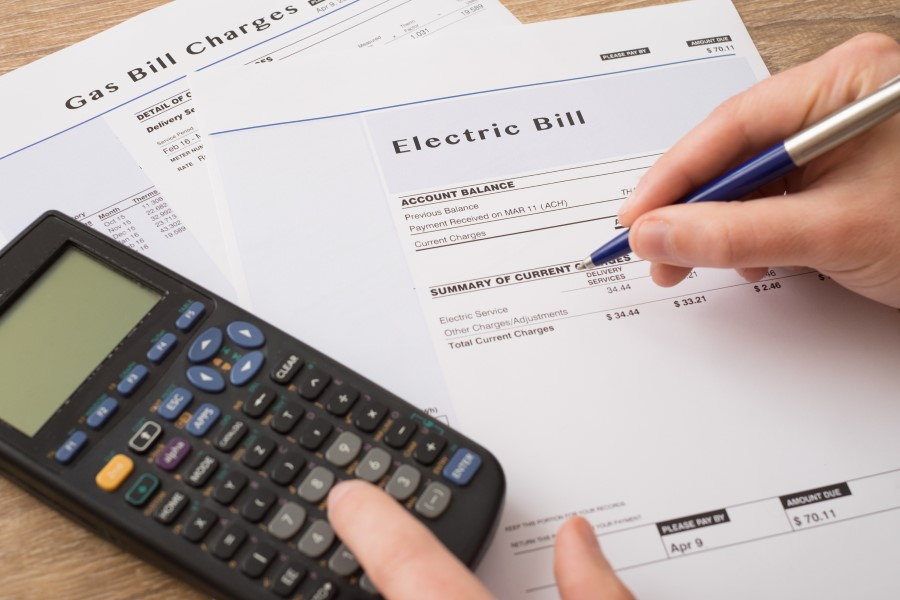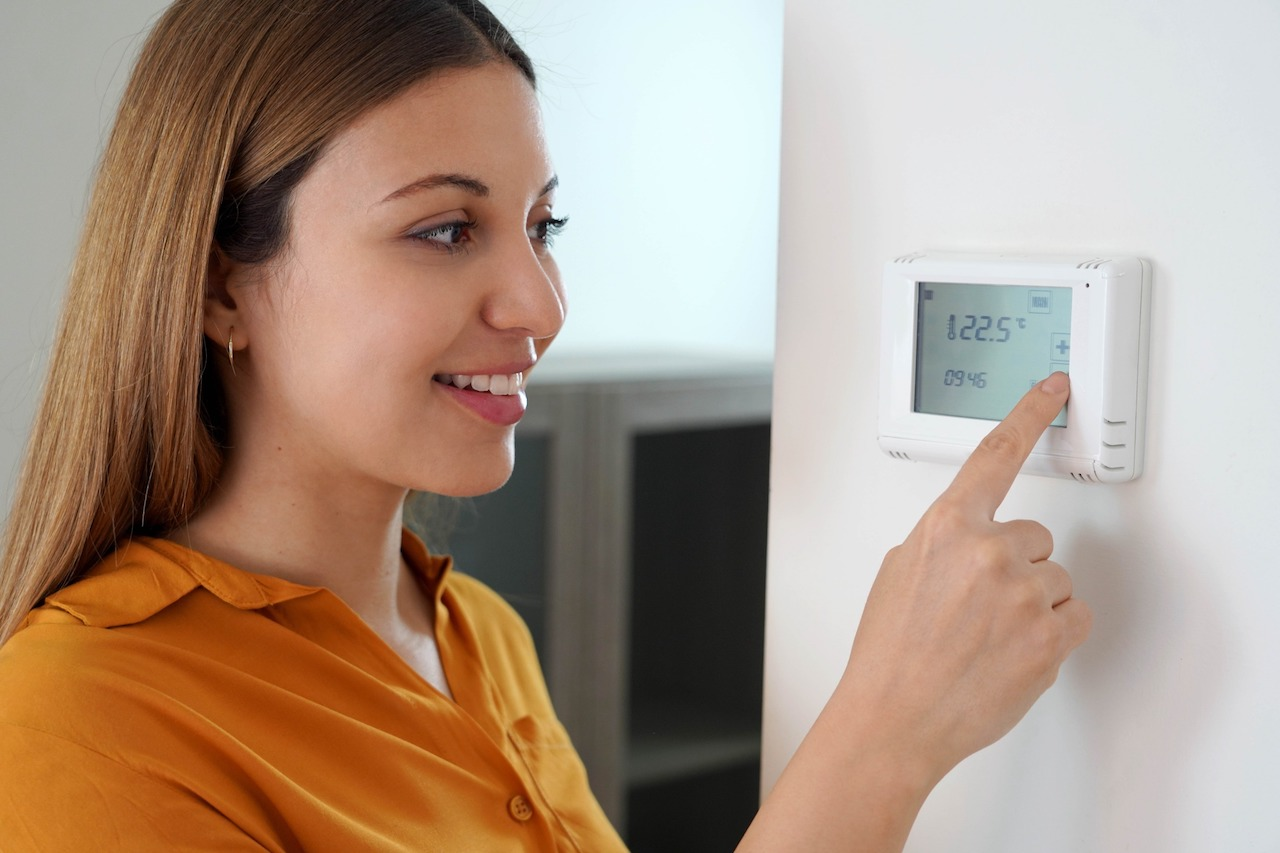
According to the U.S. Department of Energy (DOE), the heating and cooling system is the most expensive system in your house and accounts for 29% of your yearly energy bill. Up to 10% of heating bills can be saved by adjusting the thermostat setting slightly throughout the day and then at night.
The Department of Energy, a home energy audit or evaluation can identify multiple strategies (apart from modifying the thermostat) to save heating bills by up to 30%.
A significant portion of a household’s monthly expenses go toward energy costs. One of the most important steps in saving money on your electric bill is reducing usage.
In the summer and winter, when temperature control is used the most, your utility costs increase significantly. Winter can be particularly difficult because heating costs are necessary for survival.
Thankfully, there are a few simple ways to save money on your utility bill while you stay warm this winter and lower your heating bill.
Although before we at Local Washington DC Construction state these simple ways, we need to be aware of what causes a spike in electric bills.
Common Causes of High Winter Bills

During freezing weather, we frequently get asked two questions: “Why is my electricity bill higher?” and “What can I do to lower it?”
In summary, your heater will work more and longer to maintain the temperature setting on the thermostat when the outside temperature drops.
If energy-saving measures aren’t done, increasing heater consumption will result in higher-than-normal winter expenses, since heating and cooling costs approximately 42% of your electricity bill.
Let’s examine your heater’s function in more detail as well as a few easy but sometimes disregarded reasons why your winter energy costs are greater.
Fidgeting with your thermostat
Even in a perfect world, turning up your thermostat by ten degrees on a chilly winter’s night won’t help your home warm up any quicker. Rather, it increases the amount of effort your heater must do to reach the temperature you want, which raises costs.
Furthermore, adjusting the temperature by a few degrees too often sends the heater into an expensive and ineffective loop of beginning and stopping.
Longer bill cycle
When your Transmission and Distribution Service Provider (TDSP) reads your meter, usually every 28 to 30 days, billing cycles begin and conclude. Your meter may not be read for an extra day or two during the winter holidays, which will result in extended billing cycles in December and January.
Electric vs. natural gas
Many homeowners that have gas furnaces benefit from cheaper winter electric bills. However, if your furnace is electric, the winter months might be expensive. For two reasons, electric furnaces are generally more expensive to operate than gas furnaces:
- electric furnaces produce less heat in the same period as gas furnaces,
- electricity is normally more expensive than gas in the market.
11 Winter Energy Saving Tips

To help you save money on energy use and lessen your carbon footprint, it’s critical to save electricity during the winter. Fortunately, there are several strategies to save your home’s energy when it becomes cold outside.
Brickfront Properties and Construction has researched and listed out winter energy-saving tips that will help homeowners conserve energy this winter.
Switch to a smart thermostat

One high-tech option to save electricity in the winter is using a smart thermostat. A smart thermostat is a Wi-Fi-enabled gadget that optimizes your home’s temperature settings for maximum energy efficiency.
Savings with a programmable thermostat come from being able to adjust and optimize when your furnace operates. Smart thermostats can be configured to lower temperature while you’re asleep or away from home, and then to rise just before you return at the end of the day. In the winter, you may lower your electric bill without compromising comfort.
If you have a heat pump, maintain a moderate setting or use a programmable thermostat specially designed for use with heat pumps.
Give your heating system a yearly checkup
To make sure your heating system is clean and ready to operate effectively, schedule an annual check-up early each winter. A routine examination can identify issues early on and spare you the stress, discomfort, and financial burden of a breakdown during a harsh winter. Frequent maintenance will extend the life of heating systems and reduce your winter electric bills because a well-functioning furnace requires less energy to keep your house warm.
Don’t block your air vents
You’re overworking your furnace if curtains or furnishings are obstructing your heating vents. Your ductwork may become more airtight due to blocked vents, leading to leaks and cracks. By keeping your vents clear, you can make sure that your system is operating as intended and that proper ventilation is reaching every room in your house. To direct air out of a space when furniture is positioned above a vent, consider investing in a cheap vent extender.
During the day, let the sun enter.
The sun is a great source of free heat, which explains why the family cat enjoys taking naps in sunbeams. During the day, you can take advantage of the greenhouse effect and let the sun naturally heat your home by opening your curtains and blinds.
At night, draw the curtains.
Sadly, because windows are not as well insulated as your walls, they can also be a source of heat loss. When the sun sets, draw the drapes and blinds to keep chilly air from entering your house. Should you want to increase the energy efficiency of your windows, think about investing in insulated curtains.
Eliminate air leaks and drafts by weatherstripping your doors and windows
It’s easy, affordable, and effective to seal the air in your home. Weatherstripping and caulking will typically pay for itself in energy savings in less than a year. For gaps and crevices between immovable items, such as door and window frames, use caulk.
An excellent place to start if you’re wondering how to reduce your wintertime electric bill is by closing off drafts. More heat can escape through doors and windows than you may think, but you can stop it by adding weather stripping around them. Additionally, door sweeps aid in sealing the gap that exists between your door’s bottom and the door frame. Additionally, draft stoppers can provide you with a certain level of cold-weather protection.
Weatherstripping can be used around any moving parts, such as window sashes or the door itself.
Windows
Windows are a key cause of drafts and heat loss, particularly in older homes. Use clear plastic cling wrap to seal the frame of your windows to insulate them throughout the winter.
Window film is available at any home improvement store or online, is inexpensive, simple to apply, and quick to remove in the spring. Your home’s windows can all be insulated for a few dollars, but the savings on your heating bill add up over time.
External doors
One of the main sources of draft issue is doors. Examine the weather stripping and seals surrounding the door frame if your door is drafty. If any weather stripping is missing or damaged, replace it, and caulk any cracked seals.
Attic and basement
The biggest air leaks are hidden on the attic and basement levels, so be sure to properly inspect these areas when looking for leaks. To seal the minor cracks, use caulk or foam. It can be necessary to install or replace insulation in larger gaps.
Unexpected heat leaks
Drafts can come from a few other places besides doors and windows, which you might not have considered. Electrical outlets, light fixtures, air conditioning systems, and gaps in your insulation can all let cold air into your home.
Although a lighted fireplace is a terrific method to stay warm in the winter, when it is not in use, it can let cold air in. When not in use, keep your damper closed on your fireplace. The chimney flue should be sealed and plugged if you never use your fireplace.
Close the damper when not using the fireplace
A frigid day might be perfectly ended by curling up in front of a cozy fireplace, but if you neglect to close the damper, heat may subsequently escape up the chimney. Installing a more energy-efficient fireplace and moving from a wood-burning to a gas fireplace are two other ways to save electricity in the winter. You may also increase the energy efficiency of your fireplace by installing a glass screen. Although it keeps warm air from being drawn in and exhaled out of the chimney, it reflects the heat from the fire.
Reset your water heater thermostat
The energy consumption of hot water heaters is second after heating and cooling systems. Water heater thermostat settings are often set excessively high, resulting in wasted energy usage.
After heating the water to a predetermined temperature, your water heater keeps it there continuously. This implies that, whether you use it or not, your water heater just keeps reheating water to that temperature by cycling on and off. You may reduce your monthly energy bill by a few bucks by simply setting the temperature on your water heater a few degrees cooler. You probably won’t even notice the change unless you regularly take showers at temperatures that burn your skin.
Consider adding a hot water heater blanket—a layer of insulation that encircles the hot water tank—to save money and even more energy. The heating element doesn’t need to operate as frequently and it helps retain more heat inside.
Use space heaters
Consider utilizing a space heater if you simply need to heat a small area. Because electric space heaters don’t need combustion or ducting to lose heat, they are an extremely energy-efficient method of staying warm. Space heaters are great for heating enclosed spaces that you use for brief periods, such as your garage or that bathroom that seems to constantly be colder than the rest of the house. A space heater, however, is not as effective as a heat pump or a natural gas furnace for heating a whole house.
Keep the Air Circulating
It’s common knowledge that ceiling fans are an excellent means of keeping cool during the summer, but did you also know that they can provide warmth throughout the winter?
Ceiling fans typically spin counterclockwise, forcing air downward and creating a little wind chill effect that makes you feel cooler. The majority of ceiling fans, however, feature a reverse switch that allows them to rotate in a clockwise direction, creating an updraft and dispersing the warm air that gathers close to the ceiling across the remaining space in the room.
Choose LED Lights for Your Home and Decorations
During the holiday season, utilize LED for your holiday lights. The most energy-efficient lighting option on the market right now is LED lighting. They last 25 times longer and consume 75% less energy than conventional incandescent light bulbs. Although LEDs need a somewhat higher initial investment, they are so resilient and long-lasting that your descendants may still be using the same string of lights forty years from today. Because they consume so little power, a normal wall socket can support 25 strings of festive LED lights connected end to end without being overloaded.
This will help you save energy and total energy costs.
Savings All Year Long on Your Energy Use

Energy savings is not only something to do in the cold. You’ll save money all year round with several of these winter energy saving tips. Air stripping, insulated curtains, and smart thermostats are all as effective in the summertime, even though you wouldn’t want to wear a heavy sweater in front of a space heater.
These methods compiled by Local Washington DC Construction, work just as well for keeping you warm in the winter as they do for keeping your house cool in the summer. It makes sense to save energy throughout the winter to save money all year long.
